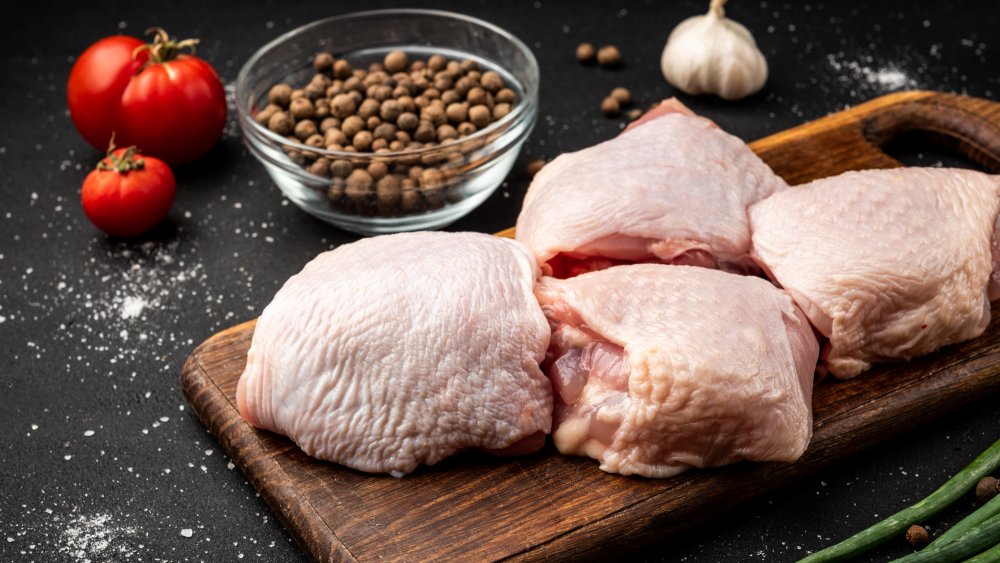Which Is More Nutritious, Chicken Breasts Or Thighs?
With the holidays rapidly approaching, the pressure to impress friends and family with our cooking prowess rises every day. Nothing can please quite like a roast chicken. The numbers don't lie — according to the National Chicken Council, the average American ate 96.5 pounds of chicken in 2019. While we love digging into a plate of our favorite poultry, trying to please everyone with their preferred thigh or breast piece can get tricky, especially if you worry about keeping the meal healthy and wholesome. Any experienced home cook has struggled with the in's and out's of trying to cook a chicken breast like a thigh and vice-versa. Navigating the best ways to prepare these favorites appears daunting before you even consider the health benefits of each cut.
When you need to stay on the nutritional straight-and-narrow, debating to serve up a thigh or breast remains high on anyone's list of culinary concerns. While you can use both parts of the bird interchangeably in many recipes, taking note of the fat content of each piece can help determine which recipe works best for which cut of meat. According to My Fearless Kitchen, chicken breasts contain slightly more protein and less fat than a thigh, making them more susceptible to overcooking, while thighs won't risk drying out as much due to the increased amount of fat in the cut. While both parts of the chicken contain healthy fats, the real dietary difference boils down to how much saturated fat appears in each.
The difference lies in the fats
According to The Mayo Clinic, saturated fat has the potential to do some serious damage to your heart and arteries. It commonly enters our diet through processed food and some meats. Beef and pork fat contain high amounts of saturated fat, but when it comes to chicken, the differences between cuts gets a bit tougher to call. According to My Fearless Kitchen, chicken thighs contain seven grams of fat and one gram of saturated fat in a three-ounce serving, versus a three-ounce breast's three grams of fat and 0 grams of saturated fat. This difference has a negligible effect on our health, meaning you won't pack on the pounds or risk heart disease if you stick to chicken thighs at your next holiday get-together.
Due to the negligible difference in fat content, both thigh and breast pieces stand on equal footing when it comes to nutritional content. Chicken lovers can rejoice over this fact and indulge in their favorite cuts without any guilt. During your next family meal or celebration, have no fear when you fight (in a loving way, of course) for the thigh or breast, and take heart knowing both cuts provide you with the same health benefits.

